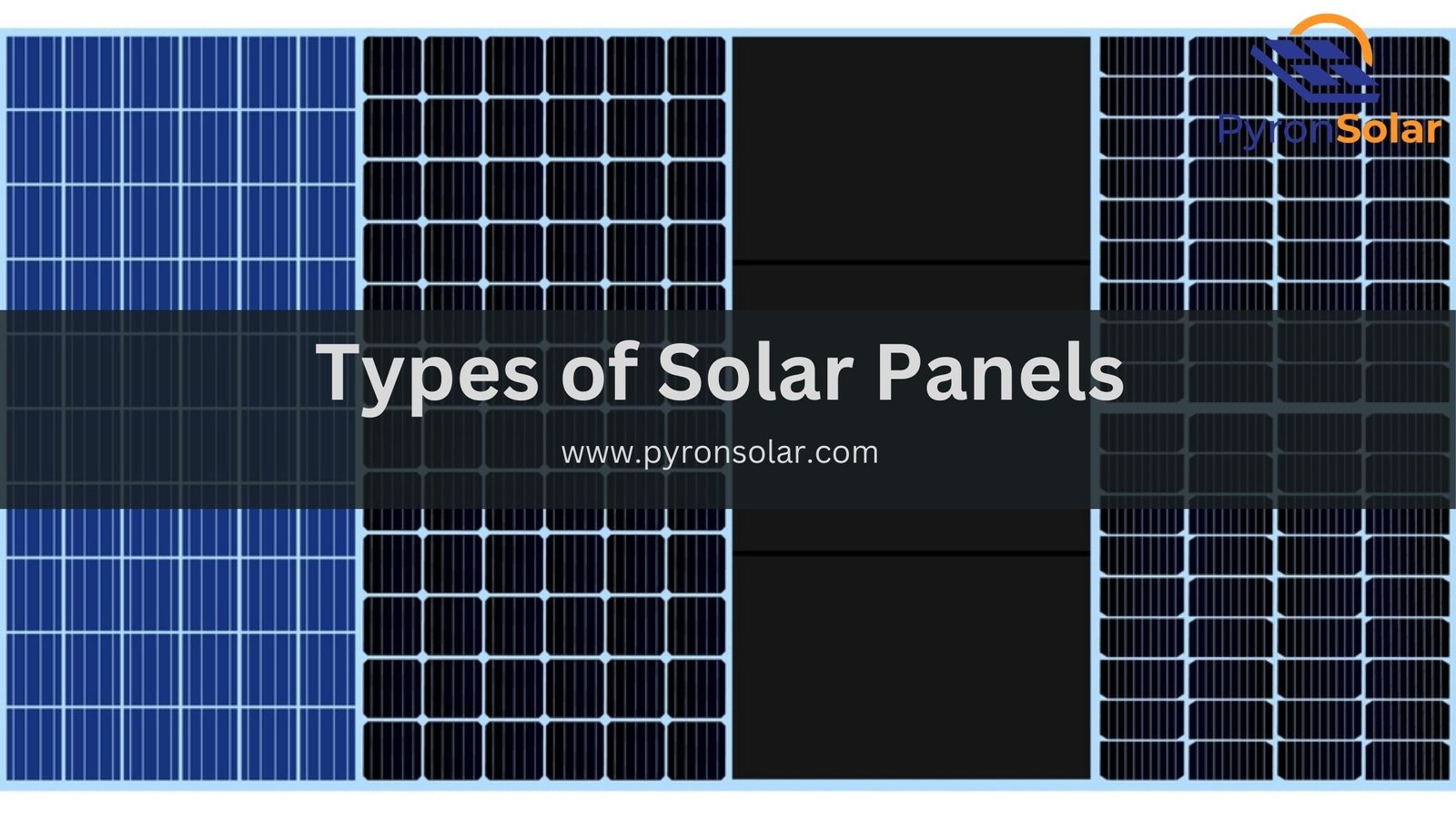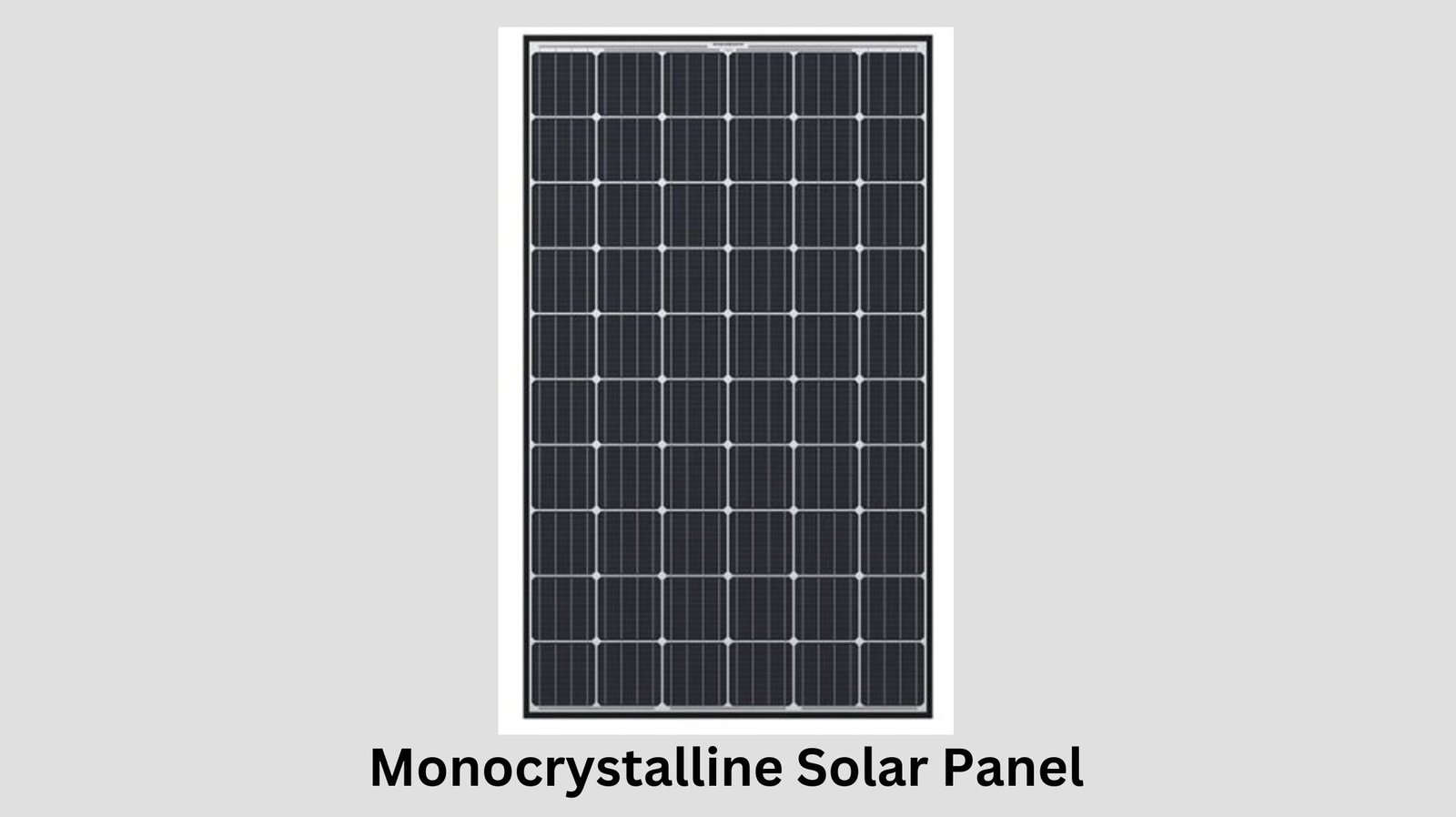Solar energy is the sun’s radiated light transformed into electric energy. Photovoltaic (PV) panels, or Solar panels, are technologies comprising many solar cells made of silicon which absorb and transform sunlight into electrical power.
Solar power is gaining immense popularity mainly because of it helps tackle climatic changes and leads to self-reliance by providing energy independence. Thus, People are switching to solar panels as it reduces greenhouse gas (GHG) emissions.
Though there are many brands and styles of solar panels, there are only three main types: monocrystalline, polycrystalline, and thin-film.
Understanding the different types of solar panels is very important while shopping. It helps you choose the best solar panel based on efficiency, cost, space considerations, and energy usage requirements.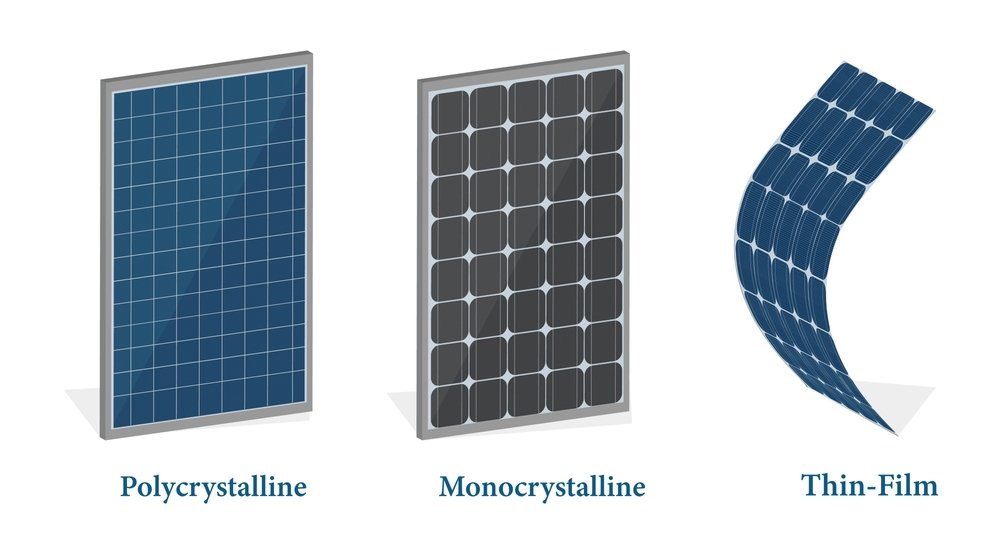
Moreover, you must know the solar panel efficiency, installer warranty, benefits and drawbacks in detail, keeping you equipped to decide on the right solar panel for you.
The Different Types of Solar Panels on the based of generations:-
There are 3 different categories of solar panels, progressing through three generations, having their distinctive technological advancements:
- First-generation is the traditional solar panels produced out of crystalline silicon, which includes monocrystalline and polycrystalline solar panels.
- Second-generation is well-known as thin-film solar panels, created from raw materials amorphous silicon or cadmium telluride.
- Third-generation refers to advanced solar technologies that are still in the development phase or research, and it includes — organic photovoltaic cells, perovskite solar cells, and quantum dot solar cells.
Solar panels are divided into different categories based on various factors, including:
Materials used in manufacturing: There are different types of materials used for different solar panels. For example, silicon-based panels are made up of monocrystalline and polycrystalline. Whereas thin-film panels are made of CIGS, CdTe, amorphous silicon, and newly developed perovskite.
Efficiency in converting Sunlight into Electricity: Panels with higher efficiency tend to produce greater amounts of electricity for a certain amount of sunlight. Generally, Monocrystalline panels have higher efficiency compared to polycrystalline and thin-film panels.
Expected Application: Many innovative solar panels are designed for application in residential, commercial, and utility-scale projects. Also, used in specialized projects such as solar-powered vehicles or space applications.
Appearance and Design: Few panels appear to have a traditional blue or black colour coating, while others seem to have different colours or designs. However, this type of categorization is particularly relevant for stylistic interests or architectural considerations.
First-Generation Solar Panels
First-generation solar panels are known by other names as traditional silicon panels or conventional solar panels. These panels are made of crystalline silicon, which is a widely used material for solar cells.
There are 2 different types of first-generation solar panels, namely:
- Monocrystalline Silicon Panels
- Polycrystalline Silicon Panels
First-generation solar panels are the most common type of solar panels used in today’s world. Indeed, these panels make up the majority of solar panels that are sold worldwide, with the monocrystalline silicon panels turning out to be the most widely used.
Many residential, commercial and utility-scale projects have successfully adopted these First-generation solar panels because of their proven technology, higher efficiency, and strong reliability.
However, there is ongoing research and development to further enhance their efficiency and lower costs. Moreover, these first-generation panels have paved the way for the development of second and third-generation solar panel technologies, each having its unique advantages and applications.
Monocrystalline Solar Panels
Monocrystalline Solar Panels, also known by an alternative name — Single-crystal panels, are black-appearing panels made using a single-crystal structure of silicon.
However, Monocrystalline Solar Panels have benefits such as High efficiency, long lifespan, and smaller space requirements. Whereas, Drawbacks of Monocrystalline Solar Panels include a more expensive cost and the possibility of silicon waste during the manufacturing process.
These Monocrystalline panels are very common because of their attractive, sleek appearance and higher efficiency rates, which makes them as most considered premium solar product.
Also, there are 2 other types of Monocrystalline Solar Panels, namely:
PERC Cells are Passivated Emitter and Rear Cell (PERC) technology that improves efficiency by adding a layer to the backside of the cell.
Bifacial Solar Panels are capable of absorbing sunlight from both sides of the panel, thereby increasing overall electricity generation.
Polycrystalline Solar Panels
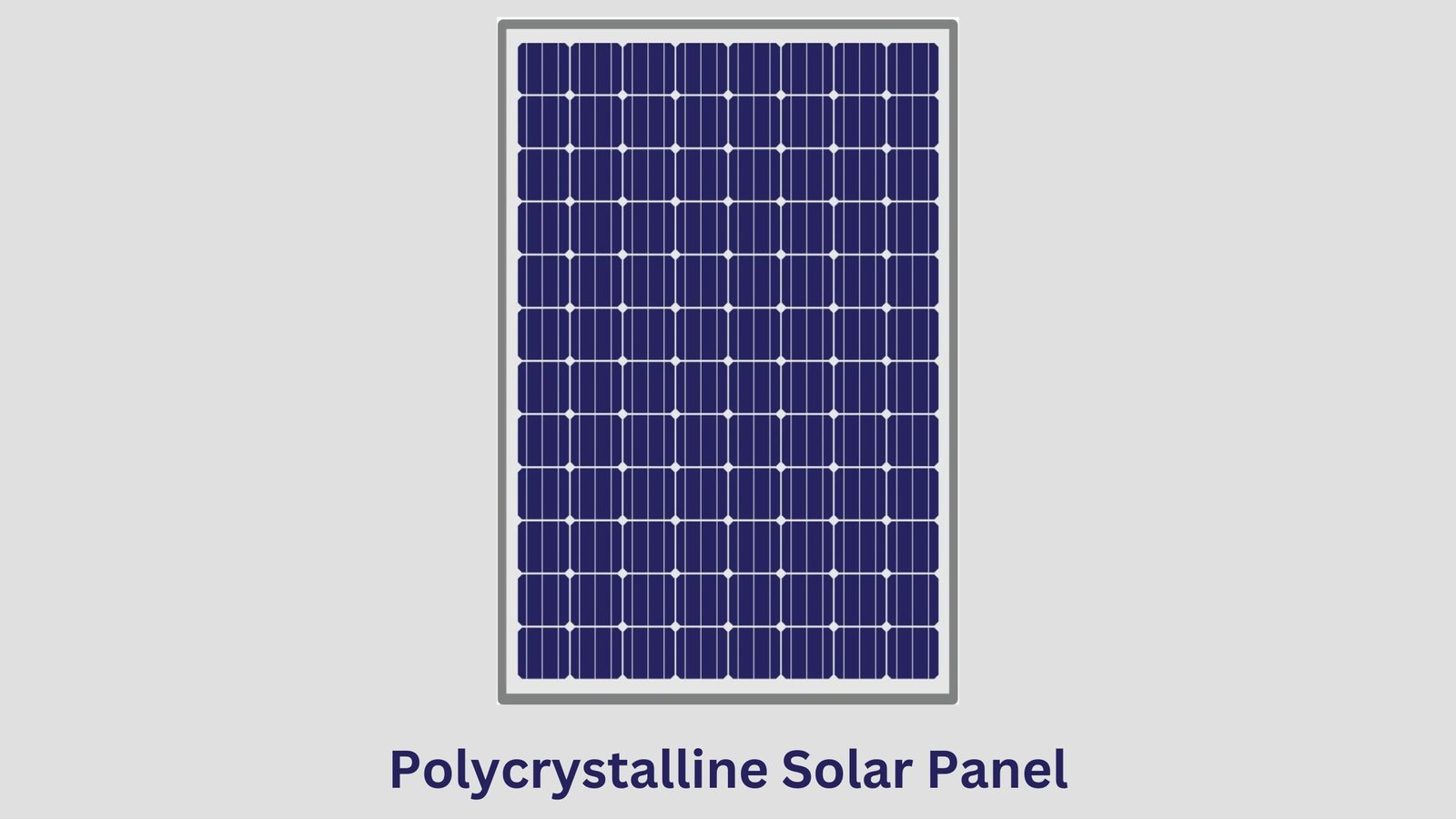
However, Polycrystalline Solar Panels have benefits such as lower cost and less waste during production. Whereas, Drawbacks of Polycrystalline Solar Panels include a considerably decreased efficiency and larger space requirements.
These Polycrystalline panels are common and production is cheaper than monocrystalline panels, which makes it the best choice for residential and commercial places. However, they are less common compared to monocrystalline panels because of their slightly lower efficiency levels.
Second-Generation Solar Panels
Second-generation solar panels are thin-film solar cells that are made from various materials such as — amorphous silicon, cadmium telluride, and copper indium gallium selenide.
These panels differ from the first generation, being more lightweight, a lot more flexible, and sometimes less efficient. Also, they are far simpler to produce and can be made in greater quantities at a much lower cost.
Thin Film Solar Panels
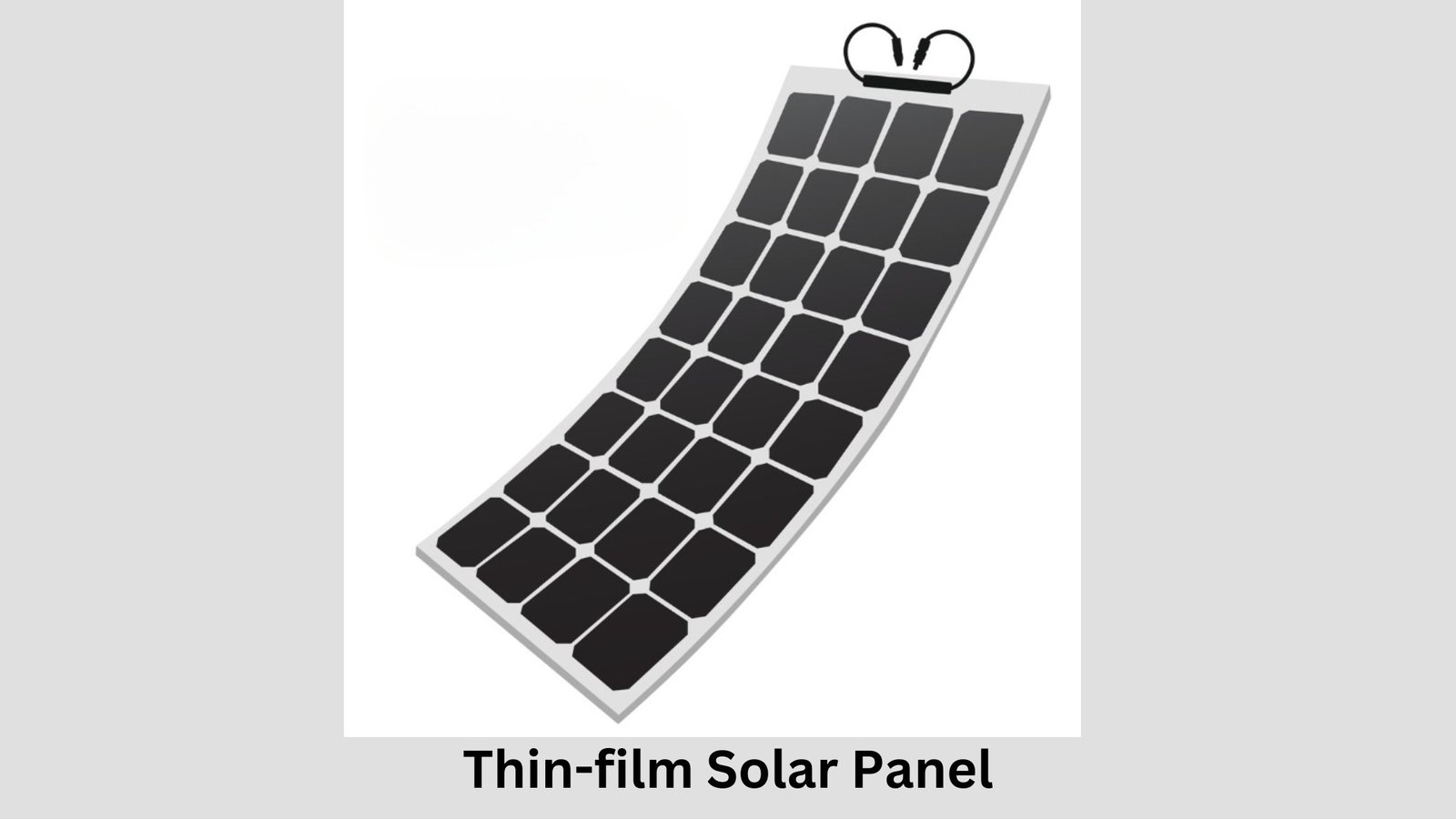
Thin Film Solar Cells have Benefits like being Lightweight, flexible, and delivering low-cost production. Whereas, a few drawbacks like lower efficiency and shorter lifespan compared to that of crystalline silicon panels.
These panels are less common in residential places, but they are most frequently used in large-scale utility installations as well as in embedded photovoltaic systems. You can learn more about thin-film solar panels in detail.
Amorphous Solar Cells (a-Si)
Amorphous Solar Cells are made from a thin layer of silicon embedded on a substrate, and these panels have benefits such as greater performance in low-light situations and a higher level of flexibility. Also, the drawbacks are its lack of efficiency and a larger area that is needed for the same output when compared to crystalline panels.
Cadmium Telluride Solar Cells (CdTe)
Cadmium Telluride Solar Cells are made of Cadmium telluride, which is a semiconductor material. It offers benefits like low costs of manufacturing and increased efficiency for thin-film technology.
However, it has a few drawbacks like containing highly toxic cadmium, which is a major threat to the environment’s well-being and safety.
These cadmium Telluride Solar cell panels are most commonly used in large-scale solar power plants.
Copper Indium Gallium Selenide Solar Cells (CIGS)
A thin layer of copper, indium, gallium, and selenium are the materials utilized to make the Copper Indium Gallium Selenide Solar Cells, exhibiting benefits such as high efficiency and lowered production costs. Also, the only drawback is having a complicated manufacturing process compared to other thin-film technologies.
Third-Generation Solar Panels
Third-generation solar panels constitute highly advanced materials and newly developed technologies, which are still not available commercially.
These panels differ a lot compared to other panels, as they focus on overcoming the efficiency and cost problems faced in previous generations. Especially using organic materials or advanced technological innovations like Quantum Dots.
Many third-generation technologies are not commonly available because they are still in the research or development phase. So they are not yet commercialized because of many technical challenges and highly expensive production costs.
Organic Solar Cells
The name Organic Solar Cells, defines that they are made from organic materials, most commonly polymers or small molecules. These cells help to convert the sun’s rays into electrical energy through the photovoltaic effect in organic materials.
Benefits of Organic Solar Cells:
- Cost-effective
- Economical production
- Flexibility
Drawbacks of Organic Solar Cells:
- Lower efficiency
- Shorter lifespans compared to conventional solar cells
Perovskite Solar Cells
The cells which are made using a perovskite-structured compound are known as Perovskite Solar Cells. These cells are good at capturing light and converting it into electricity with great efficiency.
Benefits of Perovskite Solar Cells:
- High efficiency
- Very Low production cost
Drawbacks of Perovskite Solar Cells:
- Long-term stability issues
- Scalability
Quantum Dots Solar Cells
Quantum Dots Solar Cells are formed utilizing nanocrystals, which are made up of semiconductor materials. These cells generate electricity by producing electron-hole pairs when placed in sunlight.
Benefits of Quantum Dots Solar Cells:
- Possibilities of Higher efficiency
- Adjustable absorption spectra
Drawbacks of Quantum Dots Solar Cells:
- Durability Challenges
- Electricity production costs
Multi-Junction Solar Cells
Multiple layers of various semiconductor materials together comprise Multi-Junction Solar Cells, where each layer is capable of capturing different elements of the solar spectrum and increasing its maximum efficiency.
Benefits of Multi-Junction Solar Cells:
- Achieves very High efficiency
Drawbacks of Multi-Junction Solar Cells:
- Very complex manufacturing process
- High costs
Solar Panel Types by Efficiency
It is important to know the solar panel efficiency to determine the amount of sunlight that solar panels convert into productive electricity. As a result, it has an impact on the total energy output value and space requirements.
Here are the efficiencies of every solar panel type:
- Monocrystalline: 15-20%.
- Polycrystalline: 13-16%.
- Thin-film: 10-13% (although it varies by material).
- Advanced third-generation technologies: > 20% in the laboratory (varies widely).
Monocrystalline panels are always the most efficient, whereas thin-film panels are most often the least efficient.
Solar Panel Types by Output
The output of solar panels is calculated in watts, which usually fluctuates depending on size, efficiency, and the sun’s lighting condition. Typically, Monocrystalline and polycrystalline panels range from 250 to 400 watts per panel, whereas thin-film panels can differ a lot because of their varying sizes and applications.
Most of the time, the Monocrystalline panels have the highest output because of their higher efficiency, whereas the thin-film panels tend to have less output due to lower efficiency and smaller sizes.
Solar Panel Types by Cost
The average cost per watt of solar panels completely depends on the market trends, but for the majority, monocrystalline panels are the most expensive, followed by polycrystalline, and last comes the thin-film panels which are the least expensive.
Generally, the cost of commercially available solar panels ranges from
- Less than < $1 per watt for thin-film panels.
- More than > $1 per watt for higher-efficiency monocrystalline panels.
Whereas, there are a few third-generation solar panels that are not commercially available yet and therefore, cost is not determined as they are in the development phase or research. There are a lot more reasons why solar panels are expensive.
Solar Panel Types by Appearance
Solar panels are available in a wide range of appearances, which are determined by the type of solar cells they are made of. The appearance of solar cells can be anything from the classic blue-coloured polycrystalline look to the eye-catching black-coloured monocrystalline look.
Monocrystalline solar cells are generally considered to be the most attractive because of their uniformly sleek and colour-consistent visual appearance. They are made utilizing single-crystal silicon, giving them a more natural look. It is very much preferred for residential installations where aesthetically pleasing features are the first and foremost consideration.
Other Factors to Consider While Comparing Solar Panels
When comparing solar panels, it is very important to consider various aspects beyond their appearance and physical form. Here are some of the crucial factors to consider that include — Hurricane Rating, Hail Rating, Temperature and Fire Rating.
Hurricane Rating
Hurricane ratings are very important as they help determine a solar panel’s capability to adapt to extreme forces involved with hurricanes. Therefore, these forces include high winds and flying objects, which can cause severe damage to solar panels.
There is no official solar classification scale to determine the panel’s withstanding threshold during hurricanes or harsh winds. However, the Department of Energy has revised its preferred solar panel design specifications to protect them against severe weather. Also, it includes modules with the superior ASTM E1830-15 rating to withstand snow and wind.
Hail Rating
Hail rating is becoming crucial as it evaluates solar panels’ ability to withstand the effects of hail impacts, which generally occur when there are severe storms and are likely to damage the panels.
Crystalline panels can survive hail impacts at speeds of up to 50mph (80.47 kilometres per hour) because of their thicker build quality. Whereas, thin-film solar panels, in contrast, have a very low rating due to their flexibly thin nature.
Thicker crystalline panels are far better constructed to withstand hail, although thin-film panels are considerably less resistant to hail destruction. You should also use solar panel hail protector to keep them safe and increase their lifespan.
Temperature
One of the most critical factors to be considered is Temperature because at extreme levels it can negatively impact the solar panels’ efficiency and durability. As a result, high temperatures can decrease the panel output and lead to degradation.
In general, solar panels are tested perfectly to make sure that they can function properly even at temperatures up to 85 °C (185 °F), but their efficiency starts decreasing when the temperature increases beyond the withstanding capacity.
Fire Rating
Fire rating is very important for safety reasons, as it indicates solar panels’ resistivity to fire, securing the roof and structure to which they are attached.
The different classification of solar panel fire ratings is based on their resisting performance — Class A is the most superior rating, followed by Class B and Class C. If a panel has a fire rating of Class A, then it assures the best fire resistance.
Which Type Of Solar Panel Is Right For You?
When deciding to buy the best suitable solar panel and coming to the conclusion of being right, a few factors are to be considered:
- Energy needs: Calculate your electricity consumption to estimate the required size and number of panels.
- Roof space: Check the available roof space for panel installation.
- Local climate: Think about the local weather fluctuations and their impact on solar panel performance.
- Budget: Plan your budget for the initial costs and the possible savings that can be achieved over time.
- Incentives: Inquire about possible local, state, or federal incentives for solar panel installations.
Generally, in most places, Monocrystalline solar panels are commonly considered as best suitable for both homes and businesses because of their excellent efficiency and attractive appearance. Also, they are perfect for those who have restricted or limited roof space and want to enhance their energy production.
However, the best choice of solar panels depends on a different set of circumstances and priorities of the homeowner or business which includes — budget, energy needs, and aesthetically pleasing design preferences.
Ray is an avid reader and writer with over 25 years of experience serving various domestic and multinational private and public energy companies in the USA.

